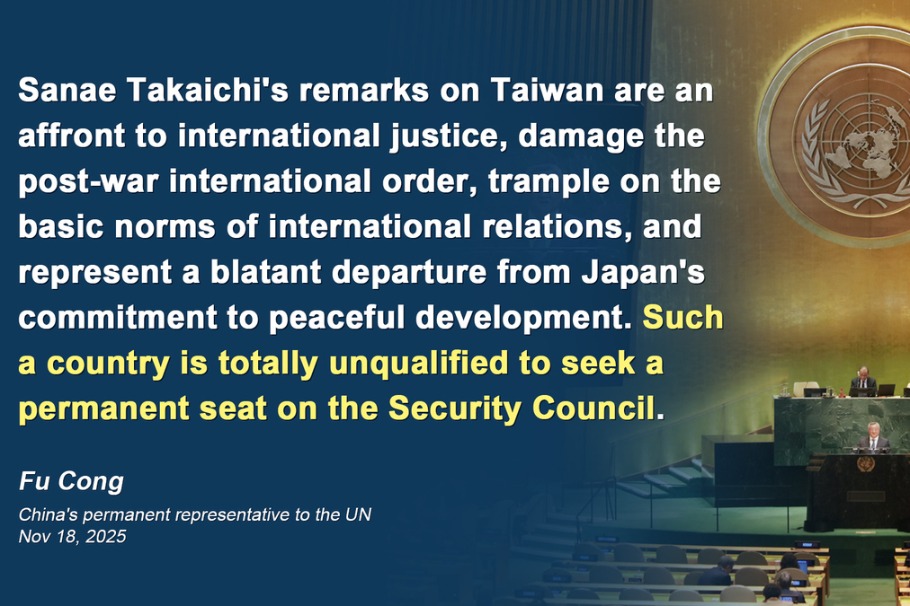To safeguard peace in South China Sea, regional countries must be in the driver's seat

With the aim of ensuring lasting peace and stability in the waters, China and the Association of Southeast Asian Nations are on course to finalize a Code of Conduct for the South China Sea.
As the shared homeland for these countries, which constitute a key driver of the global economy, and an important international waterway, the South China Sea needs constructive contributions from all stakeholders in support of their efforts to promote peace, stability and development.
Instead, the United States has only been making the situation more volatile.
Since China was identified as a strategic rival of the US, successive US administrations have not only used the South China Sea disputes as a ready excuse for the US to beef up its military presence and maintain an aggressive posture in the waters. They have also taken the initiative to strengthen military cooperation with US allies, conducting joint military exercises with them and providing them with military assistance. The new US administration has quickly shown it will be no exception.
On Feb 5, the US 7th Fleet based in Japan conducted a "multilateral Maritime Cooperative Activity "within the Philippines' exclusive economic zone with forces from Australia, Japan, and the Philippines. And ships from the US aircraft carrier USS Carl Vinson, French carrier Charles de Gaulle strike group and Japan's Maritime Self-Defense Force, including the Izumo-class helicopter carrier Kaga, commenced drills on Saturday.
The South China Sea is a crucial maritime region through which a significant amount of global trade passes and the US justifies the drills on the grounds they are conducted to deter aggressive behavior and uphold freedom of navigation in international waters.
But as Chinese Foreign Minister Wang Yi pointed out last July when he expounded on China's stance on the South China Sea issue, the South China Sea is one of the safest and freest maritime routes in the world, and there is no cause for concern about freedom of navigation and overflight, except for the actions of external countries that are seeking to stir up trouble and create disruptions, and even provoke confrontation. It is their militarization of the region that is the biggest disruptive factor to peace in the South China Sea.
It is no secret that the US' military drills in the South China Sea are part of its strategic efforts to shape the behavior of actors in the region as part of its broader strategy to contain China's rise and limit its influence in the region. By demonstrating its military capabilities and its alliance network, and supporting the Philippines in its land-grab provocations, the US is signaling its commitment to having a strong and engaged military presence in the region in order to secure its role as the primary actor in the broader "Indo-Pacific" theater.
Yet the US is fooling itself if it thinks such blatant shows of force will daunt China, and pressure it to back off from safeguarding its territorial integrity and sovereignty.
The People's Liberation Army has not only intensified its patrols in the waters to deter any destabilizing activities in the South China Sea, it has also conducted training sessions and drills with the aim of enhancing its own combat preparedness and readiness to respond to any contingency.
The US military presence in the South China Sea has long been a point of contention in the broader relationship between the US and China, and the military drills of the US and its allies in the South China Sea are provocative and potentially destabilizing, as they escalate tensions in an already volatile region. Tensions over the US' military drills in the region only undermine trust and contribute to the overall strategic competition and rivalry between the two countries.
The latest drills should sound the alarm in the Asia-Pacific to the importance of opposing foreign interference in the South China Sea issue. Beijing advocates for dialogue as the way to peacefully resolve the disputes in the region, rather than military shows of force and other provocative actions.
Today's Top News
- Japan's PM seen as playing to right wing
- Mainland increases entry points for Taiwan compatriots
- China notifies Japan of import ban on aquatic products
- Envoy: Japan not qualified to bid for UN seat
- Deforestation is climate action's blind spot
- Japan unqualified for UN Security Council: Chinese envoy






























